The Kra Canal Complex.... A vision or a dream ?
A major highlight of EPWF's early years was its support in 1973 of a Pre-Feasibility Study for a Kra Canal Complex. Funded with an EPWF grant of 10 million,
this study remains today the most comprehensive study ever made for this gigantic infrastructure project. It also provided a model for many of EPWF's future projects.
A very long history
Since the reign of King Rama I (1782-1809), Thais and foreigners had dreamt of a canal across the Kra Isthmus in Southern Thailand which would connect the Pacific Ocean through the South China Sea with the Indian Ocean through the Andaman Sea.
In 1960 Mr. Chow submitted a proposal to conduct a feasibility study for a Kra Canal and Port Complex which was approved (twice) by the cabinet at the time, but eventually vetoed in 1964 by the National Security Council on national security grounds. With characteristic patience and persistence, in 1972 Mr. Chow again approached the National Security Council under the leadership of H.E. Field Marshal Thanom Kittikachorn and at last received permission to carry out a prefeasibility study for the proposed canal.
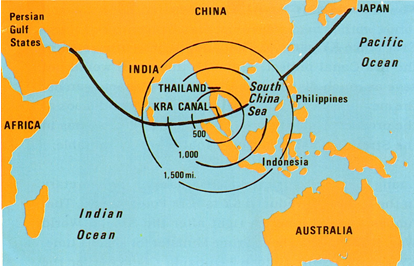
The strategic position of a Kra Canal in the world's sea lanes
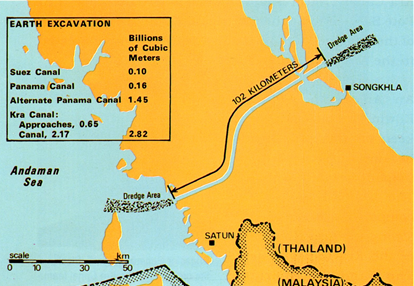
Location of the canal in Southern Thailand. Note the massive
The 1973 Kra pre-feasibility study
EPWF provided Baht 10 million to support the 1973 Kra Canal Project under the auspices of the Thai Government which resulted in a five-volume, 800-page Pre-feasibility Study.
A world class cast of expertise
The study was conducted by consulting engineers Tippetts-Abbett-McCarthy-Stratton (TAMS) and consulting economists Robert R. Nathan Associates (RRNA), in association with the Hudson Institute, Inc. with the Lawrence Livermore National Laboratory and Professor Edward Teller advising on the alternative of using nuclear energy for the excavation of the canal.
Not only was the study massive, it was also carried out in nearly-record time from January to mid-June 1973 - just five and one-half months. In that period a Technical Advisory Group assembled by Mr. Chow met in March at the Lawrence Livermore Laboratory in California and a Senior Advisory Group met in Paris in April. Both groups met again with the consultants in Tokyo in July. The study was formally submitted to the Thai government on 1 September 1973.
Not only was the study massive, it was also carried out in nearly-record time from January to mid-June 1973 - just five and one-half months. In that period a Technical Advisory Group assembled by Mr. Chow met in March at the Lawrence Livermore Laboratory in California and a Senior Advisory Group met in Paris in April. Both groups met again with the consultants in Tokyo in July. The study was formally submitted to the Thai government on 1 September 1973.
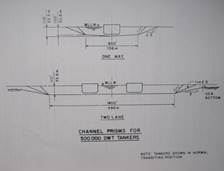
The one way and two lane alternatives that were considered
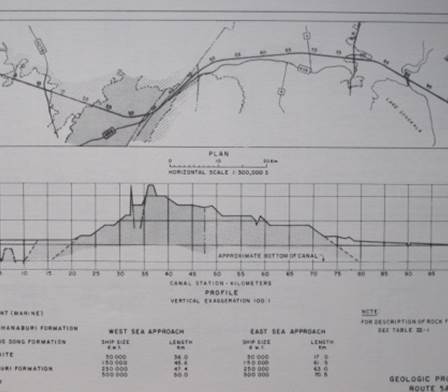
Engineering drawings from the report for the recommended route, showing (upper) the hilly terrain along the spine of Southern Thailand through which the canal must pass.
Economic-Technical Feasibility Hits Political Tsunami
Unfortunately, the government was not able to act on the generally positive indications of the study and to proceed to the next level of a detailed feasibility
study because of the watershed political upheavals in the kingdom beginning on 14 October 1973.What Could Have Been...
EPWF does not dwell on the past; we are totally focused on the present and future. But for a moment, consider with us what the construction of the Kra could have meant for Thailand.
- Sea routes would have been shortened and the dangerous Straits of Malacca - still problematic in 2013 - could be bypassed.
- Construction of the largest canal in the world would have brought enormous technological transfer and economic stimulus to Thailand.
- The industrial zones at both ends of the canal could have created prosperity equal to or exceeding that which eventually emerged around Bangkok and on the Eastern Seaboard.
- Economic prosperity in the South could have gone a long way toward the integration of this region into the rest of the nation, and very well might have helped avoid the ongoing and worsening insurgency in the area.
- Sea routes would have been shortened and the dangerous Straits of Malacca - still problematic in 2013 - could be bypassed.
- Construction of the largest canal in the world would have brought enormous technological transfer and economic stimulus to Thailand.
- The industrial zones at both ends of the canal could have created prosperity equal to or exceeding that which eventually emerged around Bangkok and on the Eastern Seaboard.
- Economic prosperity in the South could have gone a long way toward the integration of this region into the rest of the nation, and very well might have helped avoid the ongoing and worsening insurgency in the area.
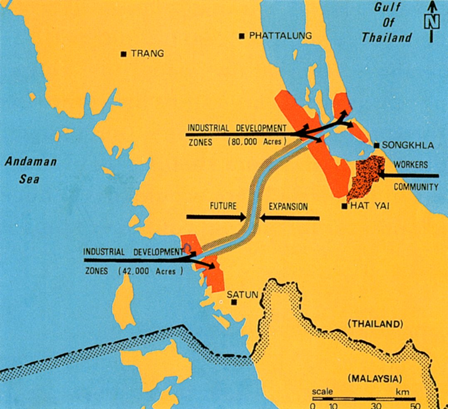
The overall conception of the completed Kra canal with industrial zones and workers' community.
A model of operation
More important than the money, however, was the fact the Mr. Chow took personal control of the management of the project, thereby giving the Foundation a model of operation that served it well in the decades that followed. It is clear to us that our most successful projects have been those in which the general manager or a board director has been directly involved in the leadership.
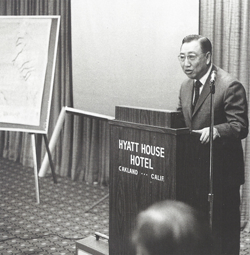
KY Addresses the meeting in Oakland, California, on 20 March 1973.
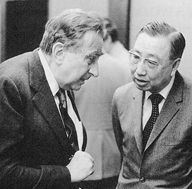
Dr. Edward Teller attended the Oakland Conference.
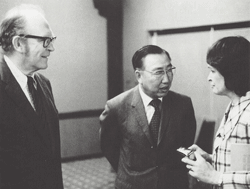
Mr. Chow conferring on the Kra Canal in 1973 with nuclear scientists Dr. Willard Libby, 1960 Nobel laureate in chemistry, and his wife Dr. Leona Woods Marshall Libby.
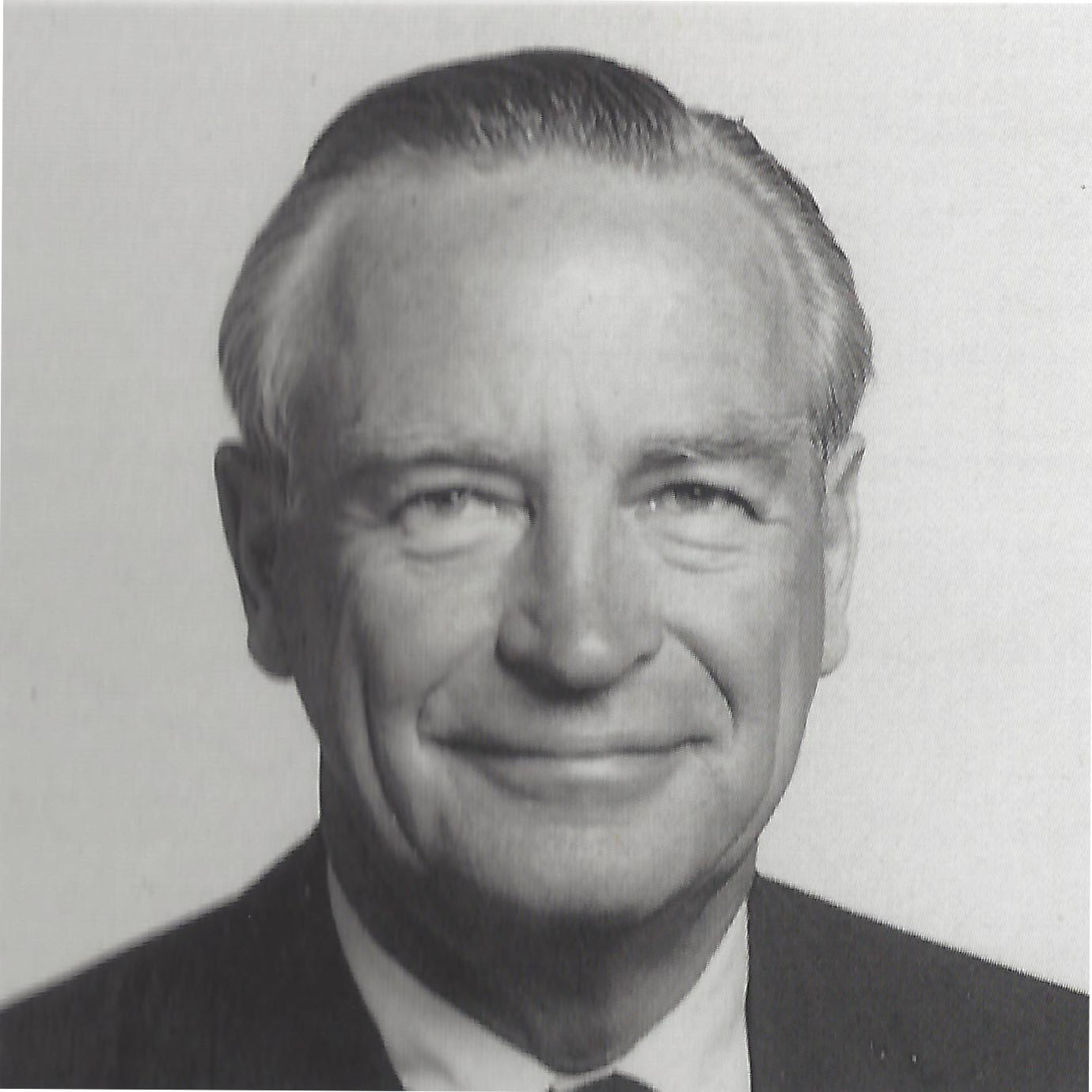
Brigadier General Edwin F. Black, the organizer of the Kra Canal team.